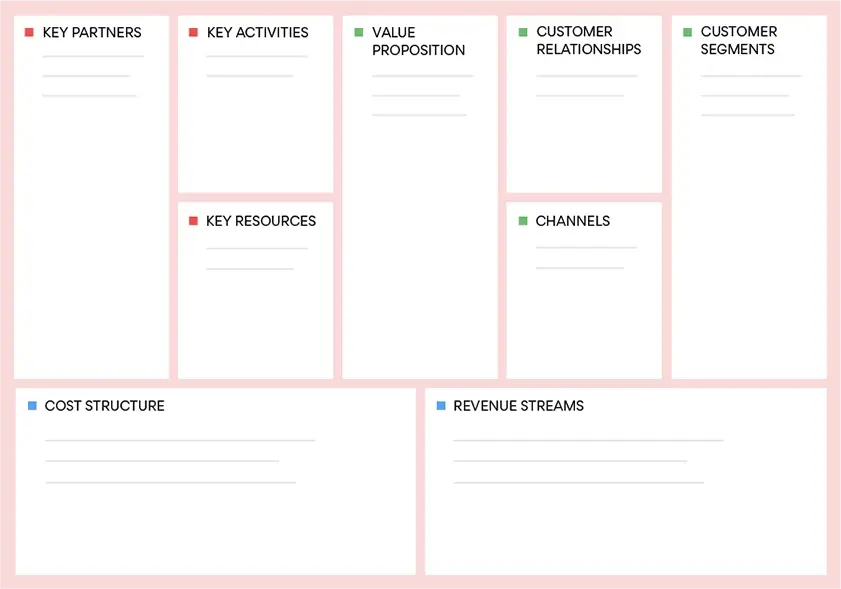🌎 Upmetrics is now available in
English
Français
Deutsch
Español
Italian
Portuguese
🌎 Upmetrics is now available in
English
Français
Deutsch
Español
Italian
Portuguese

Business Model Canvas is strategic management and lean startup template for developing new or documenting existing business models.
It is a visual chart with elements describing a firm’s or product’s value proposition, infrastructure, customers, and finances. It assists firms in aligning their activities by illustrating potential trade-offs.
The Business Model Canvas was initially proposed by Alexander Osterwalder based on his earlier work on Business Model Ontology.
If you are looking for a complete guide about Business Model Canvas check out this guide: The Business Model Canvas Explained in 7 steps
Would you like to try with a pen and paper? Try downloading BMC templates Download PPTX or Download PDF and make a print on a large piece of paper, attach it to the blackboard and start collaborating with your team.
Business Model Canvas by Alexander Osterwalder.
The Business Model Canvas itself is licensed under the Creative Commons Attribution-Share Alike 3.0 Un-ported License.

Capture Your Business Model on One Page